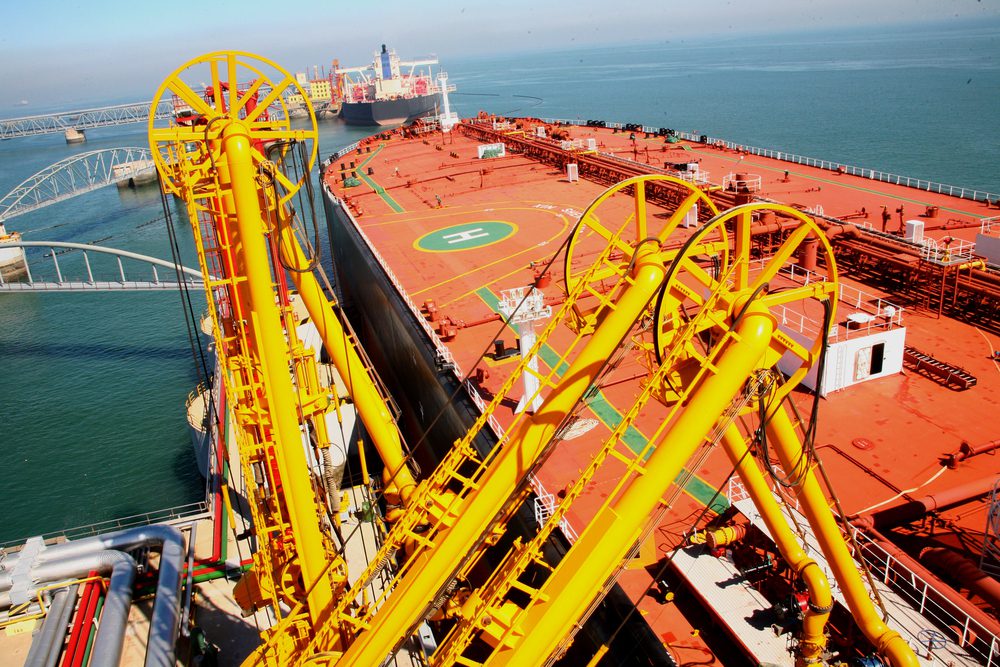By Naomi Christie
(Bloomberg) — For operators of very large crude carriers, the tankers that move as much as 2 million barrels of oil across oceans on a single trip, the fourth quarter can’t come fast enough.
Since July, shipping rates have dropped by 47 percent after later-than-usual maintenance caused Asian refineries to close and demand to fall. Now rates are poised to reach their highest levels in a final quarter since 2008, according to analysts who point to growth in the amount of crude scheduled to be loaded from West African countries in October. Nigeria is aiming for a 9.5 percent rise in the number of barrels shipped compared with last year, while Angola’s programs show a 6.7 percent increase.
The total of Nigeria and Angola’s loadings is set to be the highest for an October since records began in 2008.
The most likely buyer for the added barrels is Asia, with China building up its crude reserves as it takes advantage of higher refining margins, according to Charles Rupinski, an analyst who follows shipping for Global Hunter Securities LLC in New York. Winners may include Euronav NV, DHT Holdings Inc. and Frontline Ltd., all of which saw their shares drop between late July and late August as the hire rate declined.
Tight Market
As refineries restart, “we think the market will get tight,” said Jonathan Chappell, an analyst with Evercore Partners Inc. in New York.
Refinery utilization in Asia has risen in seven of the last nine years in the fourth quarter compared with the third, according to data from the International Energy Agency, the Paris-based adviser to 29 nations. While the U.S. used to be the main buyer of West African crude, it’s now Asia, a factor that raises the number of miles each ton of crude travels.
More miles means higher rates, Brian Gallagher, Euronav’s head of investor relations, said in a Sept. 4 telephone interview.
Daily rates for very large crude carriers on the benchmark Middle East-to-Japan route reached as high as $94,946 on July 20, according to data from the Baltic Exchange. By Aug. 21 rates had fallen 74 percent to $24,512 when later-than-usual refinery maintenance caused demand and rates to fall.
Large Carriers
Analysts now forecast that very large crude carriers will earn an average of $55,000 a day in the fourth quarter, according to data gathered by Bloomberg. The last time the ships earned more than that in a fourth quarter was 2008, according to data from shipbroker Clarksons Platou A.S.
“Any good addition of demand from West Africa will add a lot to rates,” said Odysseus Valatsas, the chartering manager of Dynacom Tankers Management Ltd., the Greece-based company whose VLCCs were booked most frequently in the past 12 months to load West African cargoes, according to broker data gathered by Bloomberg.
While no one is sure how long China will continue to stockpile crude, the relatively low price of oil compared with a year earlier will probably help stimulate demand from refineries in other parts of the world, said Andrian Dacy, the global head of maritime at JPMorgan Asset Management.
Floating Storage
Another factor may also be at play, according to Frode Moerkedal, an Oslo-based analyst at RS Platou Markets AS. If the price of oil on the spot market drops well below the price on the futures market, a structure known as contango, it could cause traders to hire ships to store oil at sea with the higher rates in order to make a profit in the future, he said
October Brent crude traded at a $2.64 a barrel discount to the January contract Wednesday. The spread would need to widen to over $3 over a three-month period for storage to be viable, shipbroker E.A. Gibson Ltd in London wrote in an Aug. 25 e-mail.
“The contango is now widening,” Moerkedal said. “It’s still not in floating storage territory, but it could happen later this year if they continue to overproduce.”
The climb in West Africa loading schedules coincides perfectly “with the decline in refinery outages in Asia and in Europe,” said Erik Stavseth, a shipping analyst at Arctic Securities ASA in Oslo. Now, “those high loading programs will actually have somewhere to go.”
©2015 Bloomberg News

 Join The Club
Join The Club











